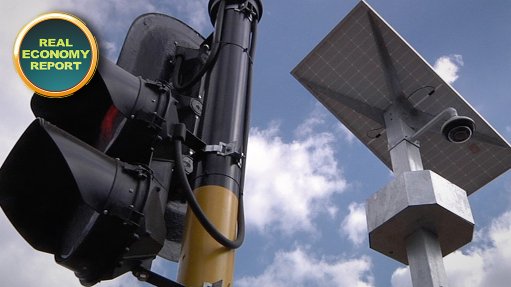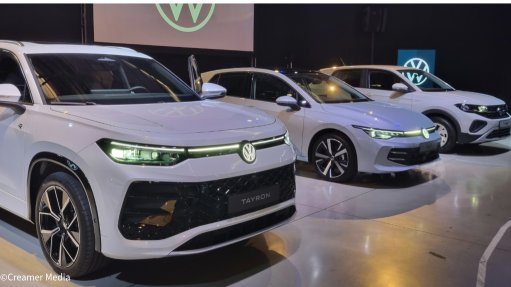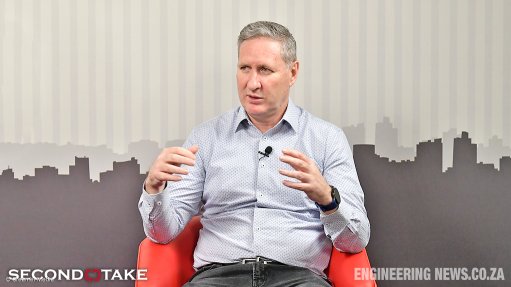Southern Africa well-placed to produce renewables, green hydrogen for export – Kearney
A study by global management consultancy Kearney has noted that Southern Africa, which has favourable conditions for renewable energy production, will be able to store renewable energy and export it to areas where renewable energy production is technically or economically limited.
“The world’s steadily growing demand for hydrogen is expected to exceed supply by 2030, making now an ideal time to invest. Although Southern Africa has a major opportunity to produce green hydrogen, the region’s demand is projected to be lower than the demand centres in Europe and Asia,” says Kearney partner Prashaen Reddy.
“For example, South Africa, the region’s most industrialised country, is projected to reach a demand of only 238 000 t by 2030,” he highlights.
With the region’s relatively low demand, the favourable production climate and the limited impact of transport costs, Southern Africa is poised to become a green hydrogen export hub.
Green hydrogen’s ability to store renewable energy holds one especially intriguing possibility, namely that it can be transported. This is achieved by transforming it into a portable product such as ammonia, methanol or an e-fuel, and work is under way to develop a way to transport liquefied green hydrogen over long distances without having to transform or reprocess it, Reddy notes.
However, beyond the theoretical merits of green hydrogen to the tangible strategies to meet global demand, there are five key moves that can put market entrants on the path to success as they seek to establish green hydrogen production facilities in Southern Africa.
Firstly, the industry must gain government support in establishing a conducive regulatory environment. The government has a central role to play in the energy transition, with market entrants’ success impacted by the level of government buy-in and a clearly defined green hydrogen strategy.
Governments set policies that impact both the speed and the direction of the energy transition and they create the regulatory environment that supports the development of production facilities and the attractiveness of the location for investors, he notes.
Further, participants should establish public and private partnerships to de-risk projects. Owing to the market’s nascency, any new development will have a variety of project and operational risks, making it more difficult to secure funding for the project itself and any off-takers. To be successful, market entrants will need to establish three partnerships to attract funders and off-takers, namely public partners, such as State enterprises, State agencies, and governments, off-takers and technology partners, Reddy says.
Additionally, new entrants must overcome infrastructure barriers and capitalise on the opportunities.
“As with any major project, significant amenities are required. Sizable green hydrogen projects, such as some announced gigascale projects, also require vast areas of land to produce renewable power,” he notes.
The industry must also secure funding. As with any megaproject, and more so for nascent technologies with inherent risk, securing adequate funding is complex. Funding from multiple sources is often required.
Kearney’s market sensing study of the Southern African renewables ecosystem identified the main archetypes for investors interested in financing renewable energy projects, each with a unique value proposition, risk appetite and expectations for a return on investment, he highlights.
Meanwhile, the industry must also drive the just energy transition. Southern Africa’s energy mix is predominantly carbon-based. For example, South Africa gets about 90% of its electricity from coal. The coal value chain directly employs about 150 000 people and these jobs are at risk amid the transition to a low-carbon economy.
Green hydrogen will be a fundamental part of the region’s just energy transition, which the International Labour Organisation defines as occurring “in a way that is as fair and inclusive as possible to everyone concerned, creating decent work opportunities and leaving no one behind,” Reddy emphasises.
However, as a nascent industry in an underdeveloped region, several obstacles will need to be overcome to capture the full benefits.
The success factors must be carefully considered along with the strategies for enabling success. There are many benefits and opportunities as it comes as a complete package, promising profitable enterprise, new jobs and more environmental sustainability in the region, he states.
“With all this play, Southern Africa offers an attractive opportunity for new entrants in the green hydrogen sector. With limited local demand expected, the region is poised to be a key exporter to demand centres in Europe and Asia,” he says.
Comments
Announcements
What's On
Subscribe to improve your user experience...
Option 1 (equivalent of R125 a month):
Receive a weekly copy of Creamer Media's Engineering News & Mining Weekly magazine
(print copy for those in South Africa and e-magazine for those outside of South Africa)
Receive daily email newsletters
Access to full search results
Access archive of magazine back copies
Access to Projects in Progress
Access to ONE Research Report of your choice in PDF format
Option 2 (equivalent of R375 a month):
All benefits from Option 1
PLUS
Access to Creamer Media's Research Channel Africa for ALL Research Reports, in PDF format, on various industrial and mining sectors
including Electricity; Water; Energy Transition; Hydrogen; Roads, Rail and Ports; Coal; Gold; Platinum; Battery Metals; etc.
Already a subscriber?
Forgotten your password?
Receive weekly copy of Creamer Media's Engineering News & Mining Weekly magazine (print copy for those in South Africa and e-magazine for those outside of South Africa)
➕
Recieve daily email newsletters
➕
Access to full search results
➕
Access archive of magazine back copies
➕
Access to Projects in Progress
➕
Access to ONE Research Report of your choice in PDF format
RESEARCH CHANNEL AFRICA
R4500 (equivalent of R375 a month)
SUBSCRIBEAll benefits from Option 1
➕
Access to Creamer Media's Research Channel Africa for ALL Research Reports on various industrial and mining sectors, in PDF format, including on:
Electricity
➕
Water
➕
Energy Transition
➕
Hydrogen
➕
Roads, Rail and Ports
➕
Coal
➕
Gold
➕
Platinum
➕
Battery Metals
➕
etc.
Receive all benefits from Option 1 or Option 2 delivered to numerous people at your company
➕
Multiple User names and Passwords for simultaneous log-ins
➕
Intranet integration access to all in your organisation

















